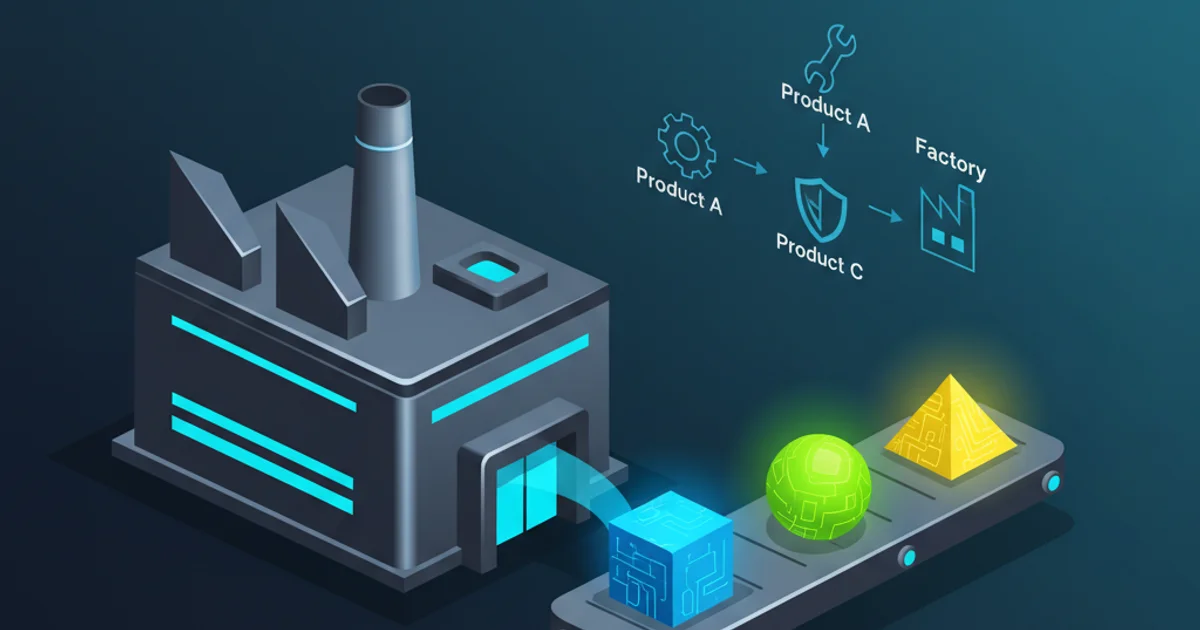What is a Factory Design Pattern in PHP?
Categories:
Understanding the Factory Design Pattern in PHP

Explore the Factory Design Pattern in PHP, a creational pattern that provides an interface for creating objects in a superclass, but allows subclasses to alter the type of objects that will be created. Learn its benefits, common use cases, and how to implement it effectively.
The Factory Design Pattern is a creational design pattern that deals with object creation mechanisms, trying to create objects in a manner suitable for the situation. It provides an interface for creating objects in a superclass, but allows subclasses to alter the type of objects that will be created. This pattern promotes loose coupling by decoupling the client code from the concrete classes it instantiates. Instead of directly instantiating objects using the new keyword, the client asks a 'factory' object to create the desired object.
What is the Factory Design Pattern?
At its core, the Factory Design Pattern defines a method for creating objects, but lets subclasses decide which class to instantiate. The factory method is typically an abstract method in a superclass, and concrete subclasses implement this method to return a specific type of product. This pattern is particularly useful when:
- A class can't anticipate the class of objects it must create.
- A class wants its subclasses to specify the objects it creates.
- Classes delegate responsibility to one of several helper subclasses, and you want to localize the knowledge of which helper subclass is the delegate.
classDiagram
direction LR
class Product {
<<interface>>
+operation(): string
}
class ConcreteProductA {
+operation(): string
}
class ConcreteProductB {
+operation(): string
}
class Creator {
<<abstract>>
+factoryMethod(): Product
+someOperation(): string
}
class ConcreteCreatorA {
+factoryMethod(): Product
}
class ConcreteCreatorB {
+factoryMethod(): Product
}
Product <|.. ConcreteProductA
Product <|.. ConcreteProductB
Creator <|-- ConcreteCreatorA
Creator <|-- ConcreteCreatorB
Creator ..> Product : creates >Class diagram illustrating the Factory Design Pattern structure.
Implementing a Simple Factory in PHP
Let's consider a scenario where you need to create different types of loggers (e.g., FileLogger, DatabaseLogger, ConsoleLogger) based on a configuration. Instead of using new FileLogger() or new DatabaseLogger() directly throughout your application, you can use a factory to encapsulate the object creation logic.
<?php
interface Logger
{
public function log(string $message);
}
class FileLogger implements Logger
{
public function log(string $message)
{
echo "Logging to file: " . $message . "\n";
}
}
class DatabaseLogger implements Logger
{
public function log(string $message)
{
echo "Logging to database: " . $message . "\n";
}
}
class LoggerFactory
{
public static function createLogger(string $type): Logger
{
switch ($type) {
case 'file':
return new FileLogger();
case 'database':
return new DatabaseLogger();
default:
throw new \InvalidArgumentException("Unknown logger type: " . $type);
}
}
}
// Client code
$fileLogger = LoggerFactory::createLogger('file');
$fileLogger->log('This is a file log message.');
$dbLogger = LoggerFactory::createLogger('database');
$dbLogger->log('This is a database log message.');
// This would throw an InvalidArgumentException
// $consoleLogger = LoggerFactory::createLogger('console');
?>
A simple PHP implementation of the Factory Design Pattern for creating different logger types.
Benefits and Use Cases
The Factory Design Pattern offers several advantages:
- Loose Coupling: Client code interacts with an interface or abstract class, not concrete implementations. This means changes to concrete classes don't require changes in the client code.
- Single Responsibility Principle: Object creation logic is centralized in the factory, separating it from the business logic of the client.
- Extensibility: Adding new product types is easier. You only need to create a new concrete product and potentially modify the factory (or add a new concrete factory in the case of Factory Method).
- Encapsulation: The factory encapsulates the complex instantiation logic, hiding it from the client.
Common use cases include:
- Database Drivers: Creating different database connection objects (MySQL, PostgreSQL, SQLite) based on configuration.
- Payment Gateways: Instantiating different payment gateway APIs (Stripe, PayPal, Square) depending on the chosen method.
- Report Generators: Producing various report formats (PDF, CSV, HTML) from the same data.
flowchart TD
A[Client Request] --> B{LoggerFactory::createLogger(type)}
B -->|type = "file"| C[new FileLogger()]
B -->|type = "database"| D[new DatabaseLogger()]
C --> E[Logger Object]
D --> E
E --> F[Client Uses Logger]Flowchart demonstrating the object creation process using a LoggerFactory.